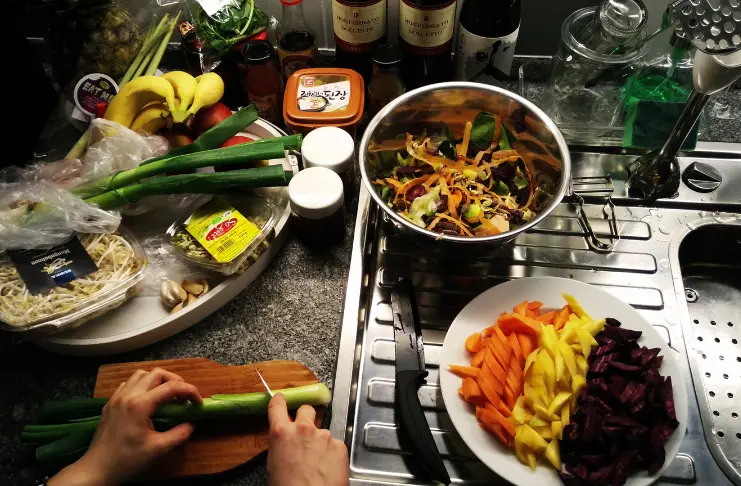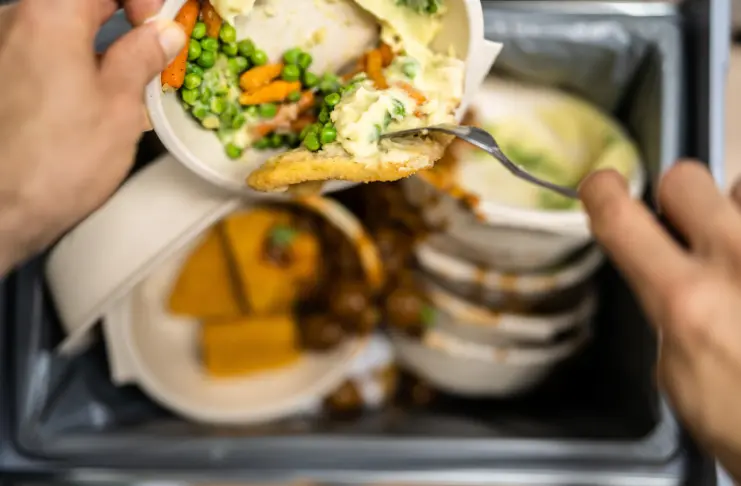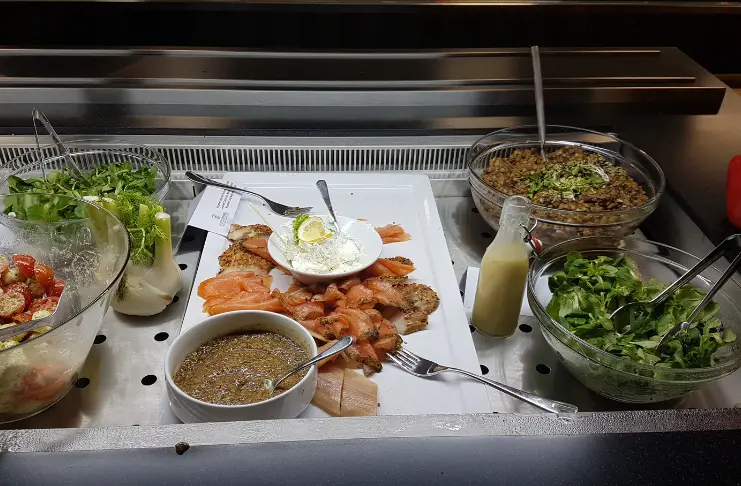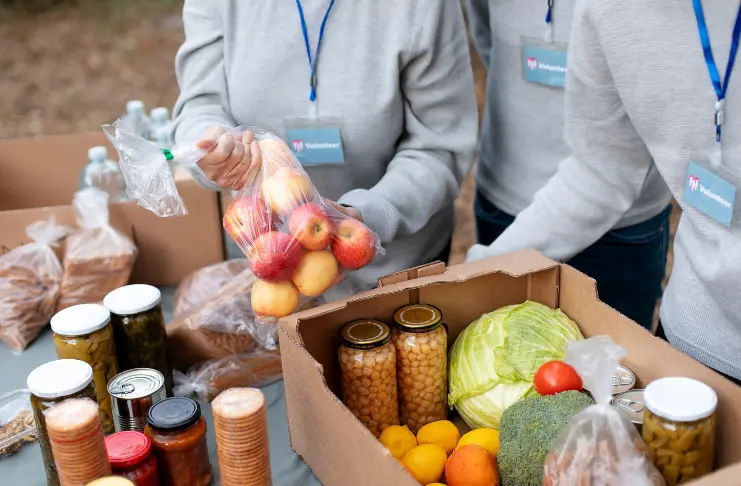
In the UK’s hospitality sector, food waste is a significant and costly issue. While sustainability is gaining attention, what happens to surplus food in a commercial kitchen often goes unexamined. Behind the scenes, the hospitality sector generates approximately 1.1 million tonnes of food waste annually, leading to millions of meals being discarded each year.
This waste isn’t just an ethical or environmental concern. For restaurants already operating on tight margins, it represents lost revenue, higher operational costs, and growing regulatory risk.
As more diners begin to care about how their meals are sourced and the government implements stricter regulations on food waste, restaurant operators must understand the scope of the problem and take action to mitigate it.
This blog explores the latest restaurant food waste statistics in the UK, their impact on the restaurant industry, and the root causes behind them.
The State of Food Wastage in UK Restaurants
Food waste is a persistent and often overlooked issue in the UK’s restaurant sector. The latest data shows that despite growing awareness, the volume of food discarded by restaurants remains high, costing the industry both financially and environmentally.
Restaurants in the UK are responsible for about 199,100 tonnes of food waste each year, making them one of the largest contributors within the hospitality and food service sector. Financially, this level of waste translates to a loss of approximately £682 million annually for restaurants alone.
According to WRAP, this food waste across the hospitality industry can be categorized into three primary sources-
- Preparation waste such as vegetable peelings, offcuts- 45%
- Spoilage such as expired ingredients- 21%
- Plate waste, which includes customer leftovers- 34%
In addition, restaurants, bars, and pubs in the UK also produce tonnes of non-food waste in the kitchen every year, which includes-
- 200,000 tonnes of glass waste
- 3 million tonnes of food packaging waste
- 660,000 tonnes of non-food waste like disposable kitchen paper
- Cardboards, which account for 25% of non-food waste
Clearly, these figures underscore the critical need for targeted actions in the restaurant sector to reduce food waste, improve operational efficiency, and mitigate environmental impacts.

Restaurant Food Waste Statistics UK: Economic Impact
Most operators know waste exists in their kitchens, but few know exactly what it costs them. It’s rarely tracked like revenue, yet it quietly eats away at the profits through various direct and indirect ways. These statistics reveal how food waste costs impact the restaurant-
- The entire UK hospitality sector loses over £3.2 billion in a year due to avoidable food waste, including waste from hotels, pubs, education, and healthcare catering combined.
- On average, 6% of a restaurant’s total sales are lost through food wastage.
- The average UK hospitality business spends up to £50,000 annually on sending food waste to landfills.
- By recycling and reusing food before it goes to waste, hospitality businesses could save up to £7,000 per year.
- New legislation requires businesses producing over 5kg of food waste to separate and recycle it, as non-compliance can potentially lead to fines starting from £300.
- According to research, only half of businesses (54%) recycle food to reduce financial losses, while only a third (32%) recycle food waste to avoid hefty penalties.
Behind these statistics are various operational costs that directly and indirectly impact a restaurant’s profit margin. The most immediate is the cost of food preparation. Think about it: every wasted portion includes the cost of purchased, stored, prepared, and discarded ingredients that did not generate revenue.
Beyond food costs, there are indirect costs. Labour used to prep food that never gets served is essentially wasted payroll.
But the economic drain doesn’t end there. Every plate of food that goes uneaten is also a lost revenue opportunity. Approximately 55% of food waste in restaurants is edible, indicating a significant loss but also opportunities for waste reduction through better planning and portion control.
The Environmental Impact of Restaurant Food Waste in the UK
Food waste in the UK is also a significant environmental issue. Discarded food contributes to greenhouse gas emissions, depletes natural resources, and accelerates climate change.
- Globally, food loss and waste account for 8-10% of annual greenhouse gas emissions, surpassing the emissions from the aviation sector.
- An annual food waste of 9.5 million tonnes generates 36 million tonnes of greenhouse gas in the atmosphere every year.
- In the UK, food and drink waste from households alone contributes approximately 18 million tonnes of CO₂ equivalent annually, representing about 3% of the UK’s total carbon footprint.
- According to government data, it takes over 100 buckets of water to create a loaf of bread, six buckets to grow one potato, or 54 buckets to rear one chicken breast. Any food waste ultimately results in water waste, too.
EXPERT OPINION
Mark Linehan, Ex-Managing Director, Sustainable Restaurant Association (SRA), says, “Many restaurants are taking this issue seriously, embracing good kitchen practices, offering smaller portions and encouraging diners to take home leftovers. But wasting half a kilo per diner is unacceptable for business, the environment, and customers. The industry as a whole must do more. Diners and restaurants need to work together and start equating value with quality rather than quantity. Restaurants should also make diners feel more comfortable about asking, and diners should feel free to ask to take home leftovers from a meal for which they have paid.” |
Root Causes of Restaurant Food Waste in the UK
Food waste in restaurants rarely comes down to a single mistake. It’s the result of multiple aspects across purchasing, prep, service, and even customer psychology.
What makes it harder to control is that many of these issues are built into how the industry operates, such as forecasting models that rely on guesswork, prep routines that lead to overproduction, and service to cater to customer expectations.
1. Overproduction
Preparing more food than necessary is one of the most common sources of waste, especially in high-volume kitchens. Buffets, set menus, or unpredictable walk-in patterns often lead chefs to over-prepare “just in case”.
For instance, kitchens batch-prepping sauces, garnishes, or side components that don’t get used in time. This can result in excess portions that go unserved and ultimately discarded.
2. Overstocking
Many restaurants struggle with accurately predicting customer turnout, especially with fluctuating weather, local events, or consumer behavioural shifts. This often leads to them over-purchasing perishable stock that expires before use.
Without holistic digital tools, such as inventory management software for forecasting demand and managing stock, restaurants can often stock up more than they realise. The result? Unused ingredients, spoilage, and higher disposal volumes.
3. Consumer Behavior
Not all waste originates in the kitchen. Guests often order more portion sizes than they can finish, contributing to high post-consumer waste. Statistics reveal that about 17% of the food served to restaurant guests is left uneaten.
They may also increasingly personalize or modify their meals, such as asking for substitutions, sides “on the plate but not in the dish,” or ordering more dishes than required. While accommodating preferences enhances experience, it can also lead to more uneaten food.

4. Supply Chain Issues
A significant share of food waste can also happen before ingredients even reach the restaurant kitchen. Improper handling during transport, inconsistent refrigeration, or delays in storing at distribution centres can result in spoilage, damage, or reduced shelf life.
For perishable items like dairy, meat, and leafy greens, even minor temperature fluctuations within the supply chain can render entire shipments unusable.
5. Food Standards Requirements
Strict hygiene and safety regulations rightly prioritize consumer wellbeing, but also contribute to waste. If items are left out too long, kept past recommended holding times, or dropped accidentally, they have to be discarded even if technically edible.
6. Infrastructure Gaps
Not all restaurants are equipped with the tools needed to minimize waste. Issues such as limited cold storage, inadequate stock rotation systems, or a lack of comprehensive inventory and food management platforms can lead to spoilage and mismanagement.
Smaller operations, in particular, may lack the staff or technology to accurately monitor expiry dates and usage trends, leading to usable food being thrown away out of caution or oversight.
Initiatives to Reduce Food Waste in the UK

The UK government and associated bodies have implemented several initiatives to tackle food waste within the hospitality industry. These efforts encompass voluntary agreements, mandatory regulations for waste management, and strategic roadmaps.
1. The UK Food and Drink Pact
The UK Food and Drink Pact (previously Courtauld Commitment 2030) is a voluntary agreement led by WRAP, aiming to achieve a 50% per capita reduction in food waste by 2030, aligned with UN Sustainable Development Goal 12.3. As of 2023, the initiative has seen-
- A 26kg per person per year decrease in food waste from 2007 to 2021, marking an 18.3% reduction.
- A 6.2kg per person per year increase in food waste from 2018 to 2021, indicating challenges in maintaining progress.
2. Guardians of Grub
Guardians of Grub is a WRAP-led initiative designed to combat the £3.2 billion worth of wasted food annually by the UK hospitality and food service sector. Launched in 2019, the campaign provides free, practical resources to help businesses reduce food waste, save money, and reduce environmental impact.
The initiative empowers restaurant operators and staff to implement the Target-Measure-Act Framework to set food waste reduction goals, measure waste accurately, and implement actionable strategies.
The campaign also provides free, practical resources such as how-to guides, a food waste calculator, and e-learning courses developed by industry professionals, covering comprehensive strategies to minimize food waste in various operational contexts.
Conclusion
Food waste isn’t anything new. Every restaurant operator knows it happens and probably has done something to avoid it. But the real shift is happening in how seriously it’s being tracked, measured, and linked to bottom-line performance.
At a time when both customers and regulators expect more transparency and responsibility, understanding food waste by the numbers and the root causes gives restaurants the edge to reduce impact and run smarter, leaner operations.
Frequently Asked Questions
According to WRAP, restaurants in the UK account for approximately 18% of the total food waste generated by the hospitality and food service sector.
According to ReFED, only about 10% of surplus food from the combined foodservice and restaurant sector globally is recovered through donations.
Restaurant food waste often stems from overproduction, poor demand forecasting, spoilage from improper storage, and customer plate waste. Supply chain inefficiencies and staff training gaps can also contribute to significant food wastage. However, waste from many of these sources is avoidable with better planning, inventory systems, and awareness at operational levels.
According to WRAP, spoilage accounts for roughly 21% of food waste across the UK hospitality sector. This includes food that expires before use due to overordering, improper storage, or inefficient stock rotation.








